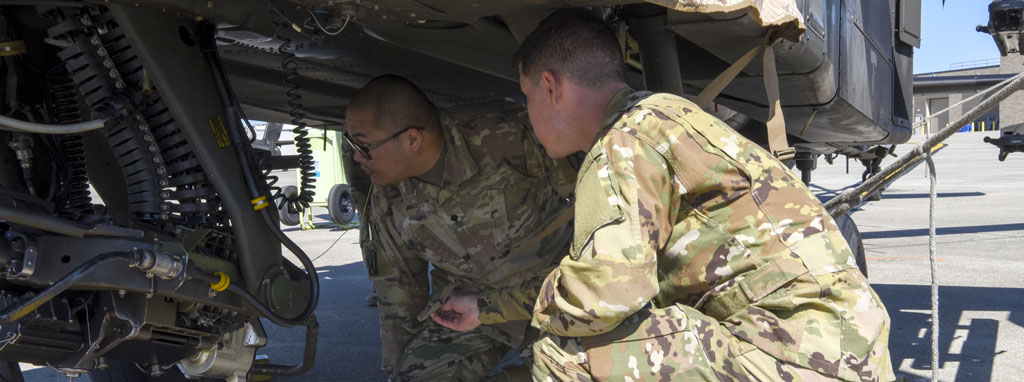The Art of Provisioning: 4 Questions and Answers with a Seasoned Provisioner

“The appearance of U.S. Department of Defense (DoD) visual information does not imply or constitute DoD endorsement.”
Provisioning what is it? A quick Google search and review of Cambridge Dictionary tells us the following: “the activity of obtaining the equipment and resources you need for a particular activity”. Now that we have a baseline understanding of what provisioning is, we are going to dive a little deeper for examples of why it is so critical as well as the important role ONEIL plays in the art of provisioning. We now speak with ONEIL provisioner Ken Howard for his insights. Being a 36-year employee of ONEIL, Ken has likely seen it all when it comes to provisioning.
What does provisioning mean to you?
Provisioning is most simply defined as making something available. Sounds easy enough. But when it comes to provisioning for the government, every part must be accompanied by documentation. This documentation comes with specifications and standards to follow, and detailed formats requiring 80+ fields to be completed with codes, numbers, and other data elements that provide information on who makes the part, should it be stocked, and does it already have a stock number. This process takes time and doing it right takes even more time.
Why is it so important to provision?
Think of it this way, something as simple as a part that has not been through the provisioning process could leave a military mission on hold or in jeopardy. In fact, provisioning is so critical on a government contract that if a part is not provisioned, the government cannot buy it, possibly putting troops and missions at significant risk. Without the proper documentation and supporting information supplied with a part, it is not procurable by the Government.
Provisioning is an essential part of the Government’s supply chain management process and determines the scope of support items needed to operate and maintain an item for the duration of its projected service life which in the case of complex equipment can range from 20 to 50 years. For example, think of the USAF’s B-52 Stratofortress bomber. This airplane was introduced in 1955 and is still in service and as relevant as ever today. How has that happened? Provisioning. Quite simply, provisioning accounts for every eventuality of a part so that it can be requisitioned by the government to keep mechanical systems working.
Can you provide us with an example of a recent provisioning project?
Sure, one that comes to mind is a recent multiyear contract completed by the ONEIL provisioning team. The project covered a heavy 4-axle crane procured by the Government to serve several mission functions from recovering heavy vehicles to assisting within theatre construction projects. This project ended with 11,000 individual parts included in the Provisioning Parts List (PPL), also known in provisioning circles as the LSA-036 report. The final PPL parts count included many OEM and vendor items that were broken down to be repaired due to the size, cost, and criticality of the parts. While this is an example of a very large project, the average military system may contain 1,000 to 5,000 parts depending on the level of breakdown included.
Why would one choose ONEIL for provisioning?
Provisioning is a small and specialized field in the Government and industry, making the strength of relationships critical to maintaining ONEIL’s position as one of the most experienced provisioning teams around. Our 10-person provisioning team has a combined 200+ years experience documenting military equipment. These employees take their work seriously and work diligently to stay current in the field, learning the latest provisioning applications available. Part of the strength of ONEIL’s relationships with the government is a result of our provisioners being plugged into each appropriate project as early as possible. This enables everyone on the team to be aware of all specifics and requirements of each provisioning project.
As I mentioned our provisioning process is performed as early as possible in the documentation project along with level of repair and maintenance task analyses that combined form the basis for the technical manuals. There are so many elements that come into play for any repairable part. For example, consider the starter on a military cargo truck, does it make economic sense to repair the starter or just buy a new one? Many things must be considered including cost of the starter, availability of repair parts, time to repair, time between failures, how many trucks are in the fleet, etc. All of these variables go into the analyses that help the Government make decisions critical to keeping equipment mission ready.
At ONEIL, we’re proud of the provisioning work we have done–and will continue to do–with our exacting standards and dedicated provisioners. No job is too inconsequential in our minds because when we excel at our jobs, we are keeping equipment up to date so that military personnel can do their jobs with equipment that has been properly provisioned. We like the idea that we’re helping to keep them safe and ready. And as long as that is our goal, we will continue to work methodically on provisioning government products in the future.
Related Resources:

